What is the PURPOSE of reading??
QUESTIONS to ponder:
1-Isn’t it to make meaning from print?
2-Isn’t it to have the thoughts of one person transferred to an audience??
3-Isn’t it for an author to connect to his/her readers??
4-Isn’t it to convey information from one person to another?
5-Isn’t it for authors’ thoughts to remain available to others forever??
ANSWER: All of the above!!
It is NOT just to ‘read the words on the page’. Let’s have a look at a very famous equation entitled “The Simple View of Reading” (Gough and Tunmer 1986), which has withstood the passage of time in terms of its validity (the research has been replicated many times..in other words, repeatedly repeated):
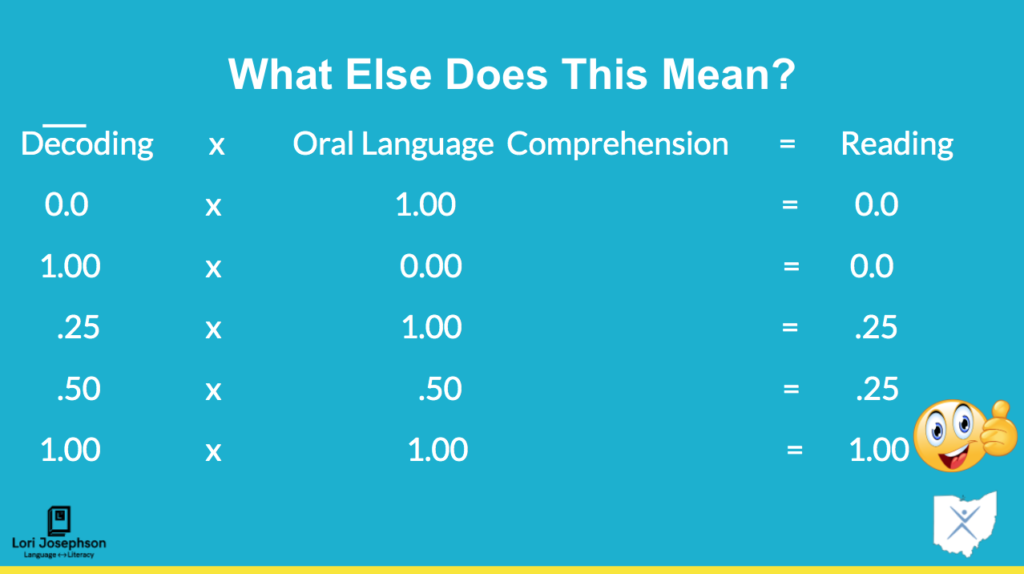
What does this look like if a ‘reader’ has weak reading comprehension? Let me share a story with you–this time featuring an older student, Luis. Although Luis could decode, his oral language comprehension compromised his overall reading if you consider (and you should!) reading for meaning.
Luis worked with a teacher who I was supervising. I am certain she practiced a great deal with this pre-adolescent. Sometimes she read higher level passages to him and sometimes she had him read short passages which he could decode fairly easily. She followed this with a request for him to ‘retell’ the passage orally. If he needed support, she asked for a ‘retell’ after maybe 1 or 2 sentences, elongating the amount he read or listened to best meet Luis’ needs . She modeled and actually drew rough drawings to remind her student of the integration of language into mental images as was necessary. She then had this student repeat her model of the retell referring to the drawings…so…what happened?
I was observing the two of them work together via video. Following his reading, she asked Luis to retell part of the passage when he simply replied, “Mrs. S., all I see is a black curtain.”
I literally laughed out loud–good thing it was via video! Luis just ‘put it out there’ so precisely!
Very many of our students just see a ‘black curtain’ when they read and even listen. I had just never heard a student state the situation so “clearly” (pun intended!).

Can you imagine attending school every day, trying to do homework, and while reading (and/or listening to someone else read), seeing a ‘black curtain’?? I can’t imagine it—-my stress increases just thinking about it.
Let me take it a step further. I am going to share three versions of the same picture with an accompanying sentence, so that you know what I mean. Here is the sentence accompanying all three:
“The gorgeous pink magnolia blooms suggest spring is in full force, with the smaller lilac bush blooming by Mother’s Day.” (FYI, this sentence is written at approximately the 7th grade level.)

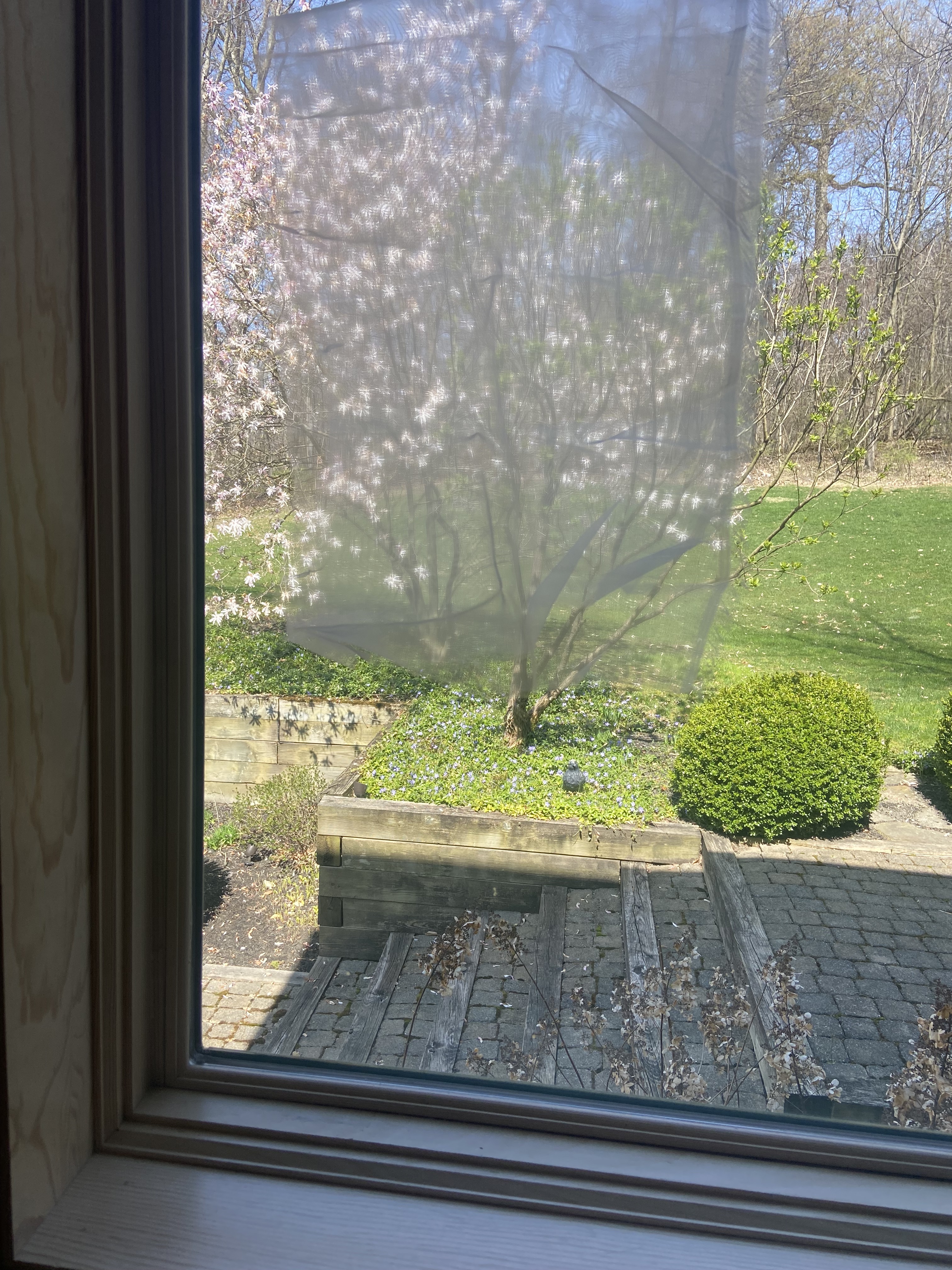
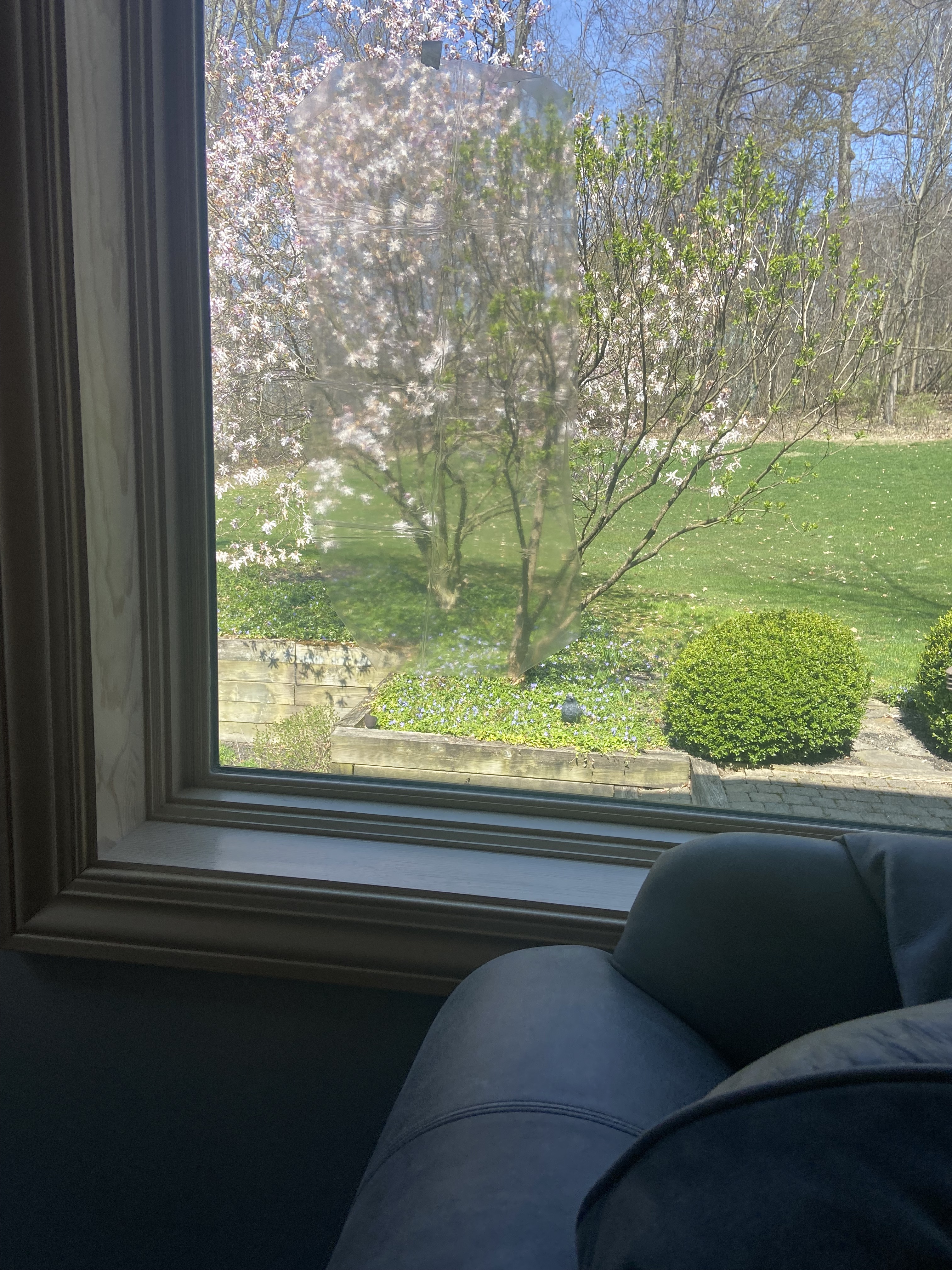
Some students simply try to get just an ‘idea’ of what they read and/or hear. Those students have just a ‘hazy’ view of the ideas and maybe a detail or two of what they read and/or hear as you can see in the middle picture (I took a picture through some gauze to make it hazy) above.
These are the kids who, when asked to retell what they read and/or have heard, begin with the very last thing they read/heard. Sometimes these kids will repeat the entire passage, word by word (verbatim)–so a parent or teacher ought to suspect that these kids are not processing the language. Sometimes these kids have difficulty decoding the words and have far better language comprehension when a passage is read to them than when they have to read themselves.
Think about it….when students either listen to language or read text (a visual representation of language), the goal is to integrate the language into mental images. The retelling assures us, as parents or teachers, that this integration is in place. The student will then have a ‘clear’ view of the ideas conveyed when listening/reading as demonstrated in the far right picture above.
When older students are then asked to write about what they have heard and/or read, students who have a ‘clear’ view of the ideas are able to use the mental images to produce print/text for others to read. As students move through the grades, this type of work hopefully becomes increasingly routine.
So what about Luis?

Here is the best prompt you can use with a student of any age:
“What do the words make you picture?” ~Lori Josephson
Provide your kids/students with what I call a ‘starter’ when you ask them for a ‘retell’:
“This sentence is about _______________.”
“This story is about _______________.”
“This passage is about _______________.”
Typically, you (parent and/or teacher) will need to model as Mrs. S. did, and it may take quite a few repetitions. It is ok to start with just a sentence at a time. When that is in place, try 2 sentences until you have your student hearing/reading a full paragraph at a time. I typically see lots of progress within a few weeks.
You can use the website autodraw.com if you are not comfortable drawing, or you can even act out the scene as needed. The circle second from the top will ‘help’ you to draw what you need to help your student/kiddo. Kids love it! Pretty soon they will be the ones drawing!

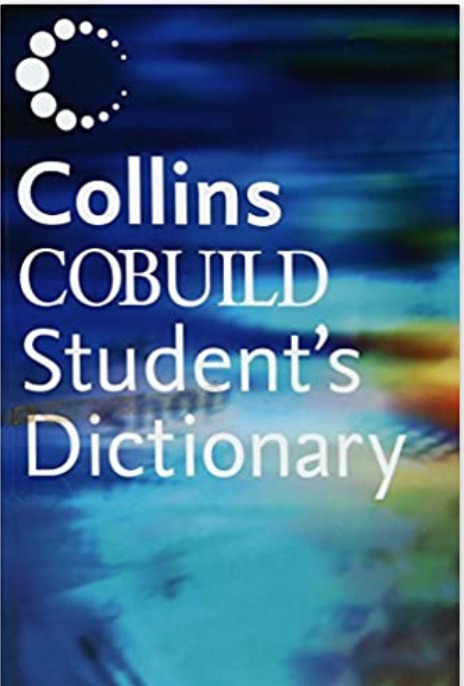
If you think a particular vocabulary word will be challenging and might result in comprehension issues, go ahead and pre-teach it. Here’s how:
1 – You say the word and have the student repeat the word so they have an oral representation of the word.
2 – Ask if the student has heard the word and provide a ‘student friendly’ definition. If you need help, I suggest the Collins Co-Build Dictionary. Students love it!
3 – Keep a list of new vocabulary words as you are able, along with an illustration of the word as needed.
Why do students have listening/reading comprehension difficulties? The reasons are many (and can include one or more):
1 – reliance (sometimes too much) upon picture cues without ever reading the text ——>
2- continuous rushing through the day/homework

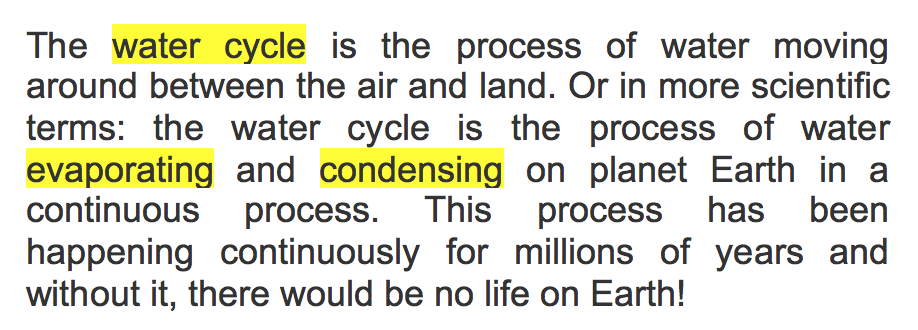
3 – textbooks are not truly ‘read’ – many publishers highlight the important vocabulary words in content areas and students simply skim to complete assignments resulting in a ‘hazy view’ of the content (example to the left)
4 – the integration of oral language and/or text→mental images is simply assumed and not directly taught/practiced as a skill in its own right
5 – the student’s first language may not be English, which further complicates things (this was not the case for Luis)
What can we do to improve things?
1 – Don’t assume anything! Do not assume your students/kids are automatically able to do the brain gymnastics as described above to get meaning from text. Just because your students/kids are able to decode adequately does not necessarily mean good comprehension will follow.
2 – Cover up the pictures! – Concentrate on the text and retell discussion–then provide the pictures to see how the language of the retell matches (or doesn’t!) the pictures.
3 – Slow down and take the time to be sure your students/kids are actually spending the time truly reading the text as opposed to ‘skimming’ for what they are able to glean quickly–this is especially true for middle and upper grade kiddos. It is well worth your time to discuss what has been heard/read to be certain developing readers are truly using their language skills to mediate the print on the page.
4 – Advise your students/kids to be aware and tell you when they do not understand. Kiddos need to self-monitor their own reading behaviors. Mrs. S. was teaching Luis that very skill. Luis was wise and brave enough to share his ‘black curtain’!
Get practicing! You won’t be sorry! Summer is the perfect time to work on these skills.

Terrific article. Many good suggestions.
Each time I read your blog I learn.
Thank you, thank you.
Susan,
Excellent!!! I’ll keep writing and sharing!! Please share my suggestions with the teachers you work with at school.
Lori
Thanks, Lori. I appreciate this thoughtful discussion on this topic. One of my little guys hates doing the visualizing during our lessons. I think I need to slow down and use that auto draw site—I think he’ll love it. This week, I drew one image at a time on notecards as my students shared what they pictured. Then I shuffled the cards and had the kids sort them into sequential order and use them for the retell. My reluctant visualizer liked this, but I’d like to have a few more tricks up my sleeve, so thanks for the suggestion.
Mrs. 4444, Your idea of using the cards to sequence the retell is also a great trick to add into the mix!! Thanks for your positive comments!
Lori
Hi , I do believe this is an excellent blog. I stumbled upon it on Yahoo , i will come back once again. Money and freedom is the best way to change, may you be rich and help other people.
Yes, share with others.